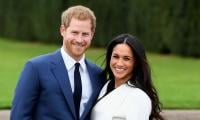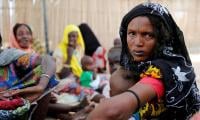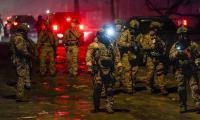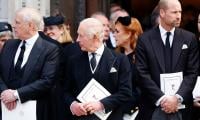Why Pakistan is fourth most dangerous country for media
World Press Freedom Day
Why development is not possible without free media
ISLAMABAD: There’s not a day that goes by without me waking up and not being instantly reminded of April 19, 2014. The constant reminder of my body being riddled with six bullets in an assassination attempt is prompted religiously every morning with the buzzing agnostic pain in one of my legs.
Although, my body continues to be the home of two of those half-dozen bullets that made me bleed and cringe in pain for weeks, I consider myself lucky to have been able to get rid of the other four. I feel even luckier when I think of all those journalists who were shot at, or blown up and they had not been fortunate enough to survive like I did.
When I think of my journalist colleagues who were attacked and killed in different parts of Pakistan in the line of duty, I tell myself to forget about the pain and let it be. Despite my failed attempts to bear the bruise in the flesh and bone, I have to admit, no amount of self-counseling is making the pain disappear yet.
Interestingly, whenever somebody asks me about the state of media freedom in Pakistan, I feel a fresh blow to the wound. Pun indeed intended. Today I feel that it’s not only media, but also common people losing their freedom of expression due to rising intolerance in the Pakistani society.
Public celebration is becoming a crime and a beard on your face makes you suspicious. Same is the case with journalists. Speaking the truth means that you are not a good professional but someone’s agent.
Pakistani media is facing multiple threats to its freedom. Year 2016 started with many unfortunate incidents. Office of a TV channel was attacked with explosives in the heart of Islamabad, claimed by ISIS on January 13th. Within a few days a journalist Muhammad Umar was assassinated in D I Khan on January 16th and another TV journalist Mehboob Shah Afridi was killed in a bomb blast in Jamrud on January 19th.
After a few weeks Hyderabad Press Club and Karachi Press Clubs were attacked by the supporters of the killer of Punjab Governor Salman Taseer. Journalists were beaten up and thrashed not once but many times again and again by none other than the Punjab police in Lahore in the recent past.
A delegation of Fata journalists recently met with someofficials of the Federal Government in the presence of senior journalists based in Islamabad and Lahore. Those tribal journalists complained that they were facing threats from both state and non-state actors.
Both sides wanted these journalists to work as their informers. When they refused to act as “informers”, both sides threatened them with dire consequences. I was present in one of the meetings in which a senior government minister clearly told poor Fata journalists that he can’t help them.
Pakistani media is facing the worst kind of harassment all over the country. Fata is a no-go area for the main stream media. There is no presence of independent media in many districts of Balochistan and Khyber Pakhtunkhwa.
TV channels and newspapers face multiple pressures from state and non-state actors in different ways. Very few people know that the editor in chief of a major media group was booked in more than 135 FIRs in all provinces under baseless blasphemy charges in the last two years.
Same media tycoon is facing over 40 court cases, 12 of which are before anti-terror courts and surprisingly one court in Gilgit announced 26 years imprisonment for him without a proper hearing. There are other journalists who are facing treason charges and lower courts have issued their arrest warrants without hearing them. On its face value Pakistani media looks very free but actually it is under attack from all sides.
According to 2016 World Press Freedom Index released by Reporters Without Borders (RSF) Pakistan is placed at number 147 out of 180 countries. India, Bangladesh, Sri Lanka, Ethiopia, Thailand and even Palestine are better than Pakistan. International Federation of Journalists (IFJ) released a report about journalists who lost their lives last year.
According to that report more than 2297 journalists were killed in last two decades all over the world. 309 out of this total mark-up were killed in Iraq, 146 in Philippines, 120 in Mexico, 115 in Pakistan and 109 in Russia. Pakistan is fourth most dangerous country for media in the world.
These facts clearly suggest countries with more free media are moving fast on the path of good governance and sustainable development. Free media and good governance support each other by promoting country’s economic and human development. Strong democracy needs transparency and transparency is not possible without free media.
Only corrupt and tyrant regimes use censorship to hide their dirty laundry. Censorship always defeats its own purpose. It reflects lack of confidence in those who implement it. The only valid censorship in this modern age is the right of people who can choose to not hear, read or know anything they don’t like.
Banning YouTube for three years never produced any positive results. Banning a film cannot serve the interest of a nuclear power and victimizing any media group in the name of national interest cannot make a country strong.
Assassination is the worst form of censorship but there are countries where corrupt regimes are becoming a threat for the “digital safety “of media. According to a recent UNESCO survey most of the journalists killed in last few years were targeted very easily because they were using digital tools in their daily work, which may have exposed them in various ways.
The threats identified in UNESCO survey include illegal digital surveillance by intelligence agencies or non-state actors, location tracking and software and hardware exploits without the knowledge of the target.
According to a Committee to Protect Journalists (CPJ) research, 38 percent of journalists murdered in last two decades were threatened before they were killed. I myself received many threatening messages through sms and emails before attack on my life in 2014.
Digital security is becoming necessary for the physical security of journalists. Some people raise a question that everyone is insecure in countries like Pakistan then why journalists need special protection.
Journalists invite threats to their lives because they try to become voice of the voiceless, they expose corruption and irregularities. They become eyes and ears of the public. Attacking journalists means attacking the eyes and ears of the society and that’s why attacks on free media are considered as crimes against humanity in many developed countries. Mind it that freedom should not be a luxury for media.
Freedom is conditional with responsibility. Free media is essential for strong democracy. Democracy cannot flourish without accountability. All the state institutions should be made answerable to the elected parliament which is still striving for its independence.
Only a strong parliament and independent judiciary can ensure the freedom of media in Pakistan. It’s a time for all state institutions to protect and promote the freedom of media ensured by Article 19 of the unanimously adopted 1973 Constitution of Pakistan.
This Constitution is the only consensus document left for the people of Pakistan. Following this Constitution may free us from the pains and agonies we as a nation and community have been suffering from for the past many decades.
-
 Apple Foldable IPhone Tipped For 2026 Launch With A20 Pro Chip And C2 Modem
Apple Foldable IPhone Tipped For 2026 Launch With A20 Pro Chip And C2 Modem -
 Meghan Lends Credence To Reports Of Rift With Kim Kardashian On Chicago's Birthday
Meghan Lends Credence To Reports Of Rift With Kim Kardashian On Chicago's Birthday -
 Florida Woman’s Alleged Bid To Bribe Police Ends In Unexpected Discovery
Florida Woman’s Alleged Bid To Bribe Police Ends In Unexpected Discovery -
 James Van Der Beek Strongly Opposes The Idea Of New Year In Winter
James Van Der Beek Strongly Opposes The Idea Of New Year In Winter -
 Elon Musk’s Starlink Rival Eutelsat Partners With MaiaSpace For Satellite Launches
Elon Musk’s Starlink Rival Eutelsat Partners With MaiaSpace For Satellite Launches -
 Fans Feel For Leonardo DiCaprio As He Gets Awkwardly Snubbed: Watch
Fans Feel For Leonardo DiCaprio As He Gets Awkwardly Snubbed: Watch -
 Japan Launches The World’s First Trial To Extract Rare Earth Elements
Japan Launches The World’s First Trial To Extract Rare Earth Elements -
 Prince Harry Breaks Cover In California Amid Tension At Home With Meghan Markle
Prince Harry Breaks Cover In California Amid Tension At Home With Meghan Markle -
 ASAP Rocky Makes Massive Comeback With New Album
ASAP Rocky Makes Massive Comeback With New Album -
 Amanda Seyfried Unveils How Channing Tatum Teased Her On 'Dear John' Set
Amanda Seyfried Unveils How Channing Tatum Teased Her On 'Dear John' Set -
 Blue Moon 2026: Everything You Need To Know
Blue Moon 2026: Everything You Need To Know -
 UN Warns Of 10-year Worst Hunger Crisis In Nigeria After Massive Aid Cuts
UN Warns Of 10-year Worst Hunger Crisis In Nigeria After Massive Aid Cuts -
 Dolly Parton Drops New Version Of Her 1977 Hit 'Light Of A Clear Blue Morning'
Dolly Parton Drops New Version Of Her 1977 Hit 'Light Of A Clear Blue Morning' -
 Redmi Note 15 Pro+5G Set For Global Rollout With Power-packed Features
Redmi Note 15 Pro+5G Set For Global Rollout With Power-packed Features -
 Meghan Markle Sparks Huge Tension With Harry At Home: 'At A Critical Crossroads'
Meghan Markle Sparks Huge Tension With Harry At Home: 'At A Critical Crossroads' -
 Insurrection Act Of 1807: All You Need To Know About Powerful US Emergency Law
Insurrection Act Of 1807: All You Need To Know About Powerful US Emergency Law



